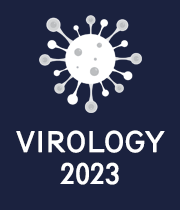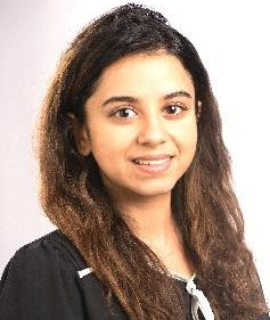Title : Lymph Node Dendritic cells are HIV reservoirs containing replication competent virus in patients under suppressive therapy
Abstract:
Background. The comprehensive characterization and quantification of where HIV persists as “reservoirs” during anti- retroviral therapy is required to design appropriate therapeutic intervention(s) to achieve a cure for HIV infection. While plethora of studies are being designed to target HIV-infected CD4 T cells – the major cell compartment documented in which HIV persists, recent studies performed in animal models or using in vitro models have indicated that myeloid cells may also serve as relevant HIV reservoirs during therapy. Indeed myeloid cells are relatively resistant to viral cytopathic effects, to the destruction by cytotoxic T-cells, and can store HIV in ‘virus-containing compartments’. Together with their long half, potentially due to their self-renewing nature in tissues, HIV-infected myeloid cells could therefore represent a potential and yet unexploited tissue reservoir.
Methods. To address this issue, we performed 1) an in-depth transcriptomic, phenotypic and functional characterization of Lymph Node (LN) myeloid dendritic cells (DC) subsets; 2) assessment of the susceptibility of LN DC subsets to HIV infection in vitro; 3) assessment of major virological parameters associated with HIV persistence in ex vivo isolated LN DCs in viremic and aviremic ART treated HIV-infected subjects and 4) near-full length single genome HIV DNA sequencing.
Results. We showed that the two myeloid LN DC subsets i.e. migratory (Lin-HLA-DR+CD45+CD11c+CCR7+) and resident (Lin-HLA-DR+CD45+CD11c+CCR7-) DCs could be identified directly ex vivo in LNs of healthy, HIV viremic and ART treated individuals. The two DC subsets transcriptomically clustered away from each other on the basis of ≈500 differentially expressed genes (P<0.05). Interestingly, viral restriction factors – SAMHD1 and APOBEC3A were significantly upregulated within resident DCs as compared to migratory DCs. We therefore assessed the capacity of LN DC subsets isolated from healthy individuals to get infected with HIV in vitro and showed that while both DC subsets were susceptible to HIV infection, LN migratory DCs harbored a much higher propensity to become infected (P<0.05). In addition, VPX (SAMHD1 counteracting protein), modulated significantly the infection levels in resident DCs (P<0.05). Interestingly, LN migratory isolated from viremic HIV-infected individuals (N=5) harbored on an average about 1875 cells/million containing integrated HIV DNA, whereas LN resident DCs harbored about 620 cells/million (N=5). In addition, both LN DC subpopulations harbored cells containing HIV unspliced gag RNA and ms tat-rev HIV RNA at levels and frequencies comparable to those detected in LN T follicular helper (Tfh) cells, previously shown to be a major cell compartment for HIV transcription and production. In addition, LN migratory DCs supported higher reactivation of HIV production (in the absence of CD4) and replication (in the presence of CD4) in vitro (P<0.05). We subsequently showed that the presence of cells harboring integrated HIV DNA in ART treated HIV-infected individuals was more frequently detected within LN migratory DCs than in LN resident DCs. Interestingly, LN migratory DCs of ART treated individuals also supported much higher levels of HIV reactivation, production and replication when co- cultured with target CD4 T cells in vitro (P<0.05). Notably, the presence of inducible replication competent virus was more frequently detected within LN migratory DCs (85% of the individuals) as compared to LN resident DCs (28% of the individuals) (P<0.05). Analysis of individual proviral DNA sequences from lymph nodes of viremic HIV-infected individuals (N = 3) showed that the proviral landscape in LN migratory DCs was indeed dominated by genome-intact proviral species (55%) as compared to LN resident DCs (40%).
Conclusions. LN migratory DCs isolated from ART treated HIV-infected individuals represents a major source of replication competent HIV despite more than two years of suppressive therapy. These cells could therefore act as a source of de novo virion production that could infect surrounding LN CD4 T cells upon ART cessation, and may contribute to viral rebound.
What will audience learn from your presentation?
- First study based on dendritic cells directly isolated from lymph node tissues of ART-treated HIV infected individuals.
- This study demonstrates that HIV may not only hijack the inherent migratory properties of DCs to gain access to LNs but in the process, may also infect LN DCs.
- Contrasting to the original paradigm, HIV infected LN DCs are detectable after prolonged ART and can be induced to produce replication competent virus.
- Therefore, strategies attempting to eradicate viral reservoirs in ART treated HIV-infected individuals by reactivating HIV, may also consider and evaluate the occurrence of replication competent viruses within LN DCs in addition to LN CD4 T cells.


